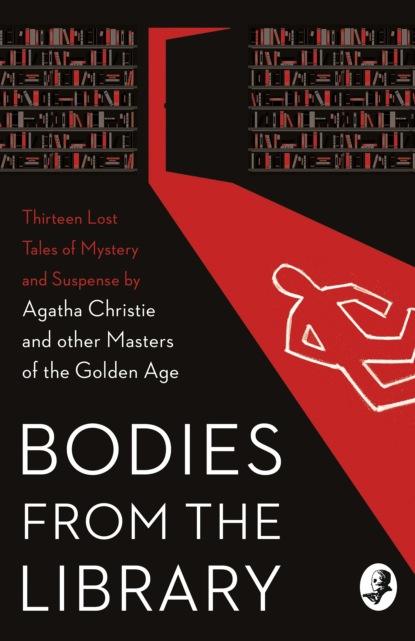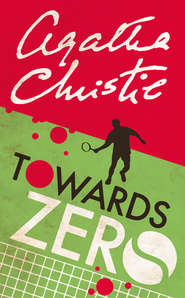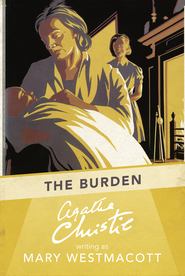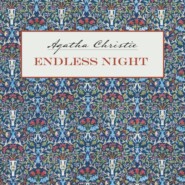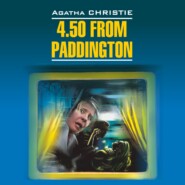По всем вопросам обращайтесь на: info@litportal.ru
(©) 2003-2025.
✖
Bodies from the Library: Lost Tales of Mystery and Suspense by Agatha Christie and other Masters of the Golden Age
Автор
Год написания книги
2018
Настройки чтения
Размер шрифта
Высота строк
Поля
The Rum Punch (#litres_trial_promo)
Christianna Brand (#litres_trial_promo)
Blind Man’s Bluff (#litres_trial_promo)
Ernest Bramah (#litres_trial_promo)
Victoria Pumphrey (#litres_trial_promo)
H. C. Bailey (#litres_trial_promo)
The Starting-Handle Murder (#litres_trial_promo)
Roy Vickers (#litres_trial_promo)
The Wife of the Kenite (#litres_trial_promo)
Agatha Christie (#litres_trial_promo)
Acknowledgements (#litres_trial_promo)
About the Publisher (#litres_trial_promo)
INTRODUCTION (#u74d070d4-130a-5514-a4b5-8d55e05dbe66)
‘Death in particular seems to provide the minds of the Anglo-Saxon race with a greater fund of innocent amusement than any other single subject.’
Dorothy L. Sayers
In the beginning was Poe. It all begins with him. An alcoholic American critic who created, among other things, the detective story. And for that, if for nothing else, God bless Edgar Allan Poe.
Poe’s detective was the Chevalier C. Auguste Dupin, a brilliant if patronising bibliophile of independent means who appeared in ‘The Murders in the Rue Morgue’, a long short story published in 1841, and in two other short stories. For these and other mysteries, Poe created the concept of a detective story—a story in which murder or some other crime is solved by observation and deduction—and Poe also created many of the tropes of detective fiction: the ‘impossible crime’, the notion of an amateur investigator from whom the professionals seek advice, the least likely suspect as murderer … Quite simply, before anyone did anything, Poe did everything. Or almost everything.
While Poe’s stories were popular, and prompted others to try their hand at detective fiction, it would be nearly twenty years before the first novel-length detective story was published. This was The Notting Hill Mystery (1862–63) by Charles Warren Adams, writing as Charles Felix. Though other detective novels appeared, most notably The Moonstone (1868) by Wilkie Collins, detection remained generally subordinate to romance and suspense, and it would be a further twenty years before the next landmark in detective fiction, Fergus Hume’s The Mystery of a Hansom Cab, published in 1886. And then, in 1887, readers were introduced to the greatest detective of them all, Arthur Conan Doyle’s Sherlock Holmes. As well as that first novel, A Study in Scarlet, Holmes appeared in three more novels, but it is principally because of the fifty-six short stories about Holmes, published in the Strand magazine, that the character has endured. While Holmes had other ‘rivals’ in the 1880s and ’90s, most notably Arthur Morrison’s investigator Martin Hewitt, none has survived to the present day.
The popularity of detective fiction, especially in the short story form, continued into the Edwardian Age, although only two characters from that period approach Holmes in terms of the quality of the stories in which they appear: G. K. Chesterton’s Father Brown, a Catholic priest with an eye for paradox and a soul for the guilty, who featured in more than fifty stories; and Dr John Thorndyke, R. Austin Freeman’s preternaturally intelligent forensic investigator, although his novel-length cases are more satisfying than the forty-one short stories in which he appears.
While the puzzles set by Chesterton and Freeman were for the most part very much in the tradition of the Sherlock Holmes mysteries, E. C. Bentley’s 1913 novel Trent’s Last Case was a game-changer, its publication often regarded as marking the beginning of what has become known as the Golden Age of crime and detective fiction. In Trent’s Last Case, Bentley presented a clear problem, the shooting of a millionaire; but he turned convention on its head by allowing Trent to fall in love with a suspect—commonplace now but far from so at that time—and Bentley further confounded readers’ expectations because Trent does not solve the case.
Trent’s Last Case was immensely popular and remains in print today, along with Bentley’s second Trent novel and a volume containing all thirteen of the Trent short stories, Trent Interviews (1938). The novel prompted a boom in detective fiction in Britain, and for the best part of the next twenty years a detective short story appeared in almost every issue of almost every magazine: in long-lost titles like The Red, Pearson’s, The Bystander, The Sphere, The Corner, BritanniaandEve, as well as others that have endured like Harper’s and The Tatler. Detective stories—and episodic mystery serials—also became a standard feature in national weekly newspapers like the News of the World, and they could also be found in regional weeklies like the Yorkshire Weekly Post and the Sheffield Weekly Telegraph. These and countless other titles quickly became a strong, diverse and seemingly sustainable market for detective fiction, especially stories that turned on a twist or which featured an impossible crime, an unusual weapon or an unbreakable alibi, and they provided a complementary source of income for many of the best-known Golden Age authors as well as for some opportunistic hacks.
As the First World War ended, a steady trickle of novels that have come to be recognised as classics of the genre began to appear. In 1920, the Irish engineer Freeman Wills Crofts published The Cask, a sturdy police procedural whose mystery carried it through multiple editions. The same year, Agatha Christie, unquestionably the most popular writer of the Golden Age, had her first detective novel, The Mysterious Affair at Styles, serialised over eighteen weeks in the weekly edition of The Times, providing a retired Belgian police officer, Hercule Poirot, with his first case, and his first published book in Britain in 1921. In 1923, Dorothy L. Sayers’ first Lord Peter Wimsey novel, Whose Body?, was published, while 1924 saw the publication of The Rasp, the first of Philip Macdonald’s Colonel Gethryn novels. In 1925, John Rhode’s Dr Priestley and Anthony Berkeley’s Roger Sheringham took their first bow in, respectively, The Paddington Mystery and The Layton Court Mystery.
And so on. The trickle became a flood …
By the mid-1920s the appetite for crime fiction was enormous in Britain, as well as in much of the English-speaking world. As well as the many weekly and monthly magazines that carried crime and detective stories, daily newspapers also published mysteries, often basic puzzle stories in which the object was simply to spot the murderer’s error before the detective. And when radio came along, in the form of 2LO, the precursor to the BBC, it provided a new outlet for detective fiction, a tradition that continues—thankfully—to this day.
In 1928, with his tongue (as often) firmly in his cheek, Father Ronald Knox set out ten rules for anyone considering writing a detective story; in America, the crime writer S. S. Van Dine did much the same, albeit at greater length. And in late 1929, Anthony Berkeley founded the Detection Club, a dining club to allow the elite of the genre to gather together and at the same time distinguish themselves from the mass of writers then working to meet the enormous demand for mysteries.
With hindsight, the 1930s can be seen as the high-point of the Golden Age, with many of the greatest writers in the genre producing their finest work, carefully constructed novels in which generally bloodless crimes are committed by consistently ingenious means; criminals are protected by unbreakable alibis and seemingly impenetrable mysteries are resolved by unmatchable detectives.
The Golden Age can be regarded as having ended in 1937 with the publication of Dorothy L. Sayers’ final Wimsey novel, Busman’s Honeymoon, which she described as ‘a love story with detective interruptions’, despite previously having said that ‘sloppy sentiment’ had no place in detective stories. However, it is important to acknowledge that there is much debate about dates. Some consider that the Golden Age continued into the 1940s, while others argue that it did not end until well into the second half of the twentieth century. Nonetheless, after Busman’s Honeymoon came the Second World War, and nothing was ever the same again. The magazines and newspapers that had survived paper rationing continued to carry mysteries, including the London Evening Standard, which published a detective story almost every day through to the early 1960s. While Dorothy L. Sayers and Anthony Berkeley had abandoned writing in the genre in the late 1930s, other Golden Age writers continued, with some like Agatha Christie and Ngaio Marsh writing into the ’70s and ’80s. As Berkeley and others had predicted, the focus of crime fiction moved away from detective puzzles, which focused for the most part on ‘Who?’ and ‘How?’, to more psychologically nuanced mysteries in which ‘Why?’ was the driving question.
Dating from as far back as 1917, most of the stories and plays in this collection, all of them by writers active in the Golden Age, have either been published only once before—in a newspaper, a rare magazine or an obscure collection—or have never been published until now. They hark back to a gentler time, when murder was committed by simpler means and solved without forensic science. And yet, if the psychological thriller and police procedurals reign supreme today, there are still stories and television series that have their roots firmly in the Golden Age—writers like Elly Griffiths, Ann Cleeves or, in a delightfully mad way, Christopher Fowler; and programmes like Death in Paradise and Midsomer Murders, as well as others of mixed lineage like Shetland, Broadchurch and River. There are also a small number of continuation novels, which aim to sustain the traditions of the Golden Age by reviving some of its best-loved characters—the Wimsey novels by Jill Paton Walsh, Sophie Hannah’s Poirot series, Mike Ripley’s Campion novels and unquestionably the best of its kind, Money in the Morgue by Ngaio Marsh and Stella Duffy, published in 2018. And, happiest of all, many of the classics of the Golden Age remain in print or are available as e-books thanks to publishers like HarperCollins, the British Library and small press imprints like Crippen & Landru, which has published many new short story collections by individual Golden Age authors.
Finally, there is the annual Bodies from the Library conference, held each year since 2015 at the British Library in London and attracting an audience from around the world. The event brings together writers, readers and academics to consider and discuss the themes and character of the books of the Golden Age and to focus on particular authors or publishers and their unique contributions. Among other topics, the conference has highlighted the existence of a frustratingly large number of uncollected short stories, forgotten radio and stage plays, and even unpublished material by some of the best-remembered writers of the period. For most of the individual writers concerned there are insufficient stories to assemble new dedicated collections, but there is ample material for volumes such as this, bringing together ‘lost’ works by different writers for their keenest admirers as well as for collectors and new readers who have an insatiable appetite for murder and the innocent amusement of a bygone age.
The Golden Age is dead; long live the Golden Age!
Tony Medawar
April 2018
BEFORE INSULIN
J. J. Connington
‘I’d more than the fishing in my mind when I asked you over for the weekend,’ Wendover confessed. ‘Fact is, Clinton, something’s turned up and I’d like your advice.’
Sir Clinton Driffield, Chief Constable of the county, glanced quizzically at his old friend.
‘If you’ve murdered anyone, Squire, my advice is: Keep it dark and leave the country. If it’s merely breach of promise, or anything of that sort, I’m at your disposal.’
‘It’s not breach of promise,’ Wendover assured him with the complacency of a hardened bachelor. ‘It’s a matter of an estate for which I happen to be sole trustee, worse luck. The other two have died since the will was made. I’ll tell you about it.’
Wendover prided himself on his power of lucid exposition. He settled himself in his chair and began.
‘You’ve heard me speak of old John Ashby, the iron-master? He died fifteen years back, worth £53,000; and he made his son, his daughter-in-law, and myself executors of his will. The son, James Ashby, was to have the life-rent of the estate; and on his death the capital was to be handed over to his offspring when the youngest of them came of age. As it happened, there was only one child, young Robin Ashby. James Ashby and his wife were killed in a railway accident some years ago; so the whole £53,000, less two estate duties, was secured to young Robin if he lived to come of age.’
‘And if he didn’t?’ queried Sir Clinton.
‘Then the money went to a lot of charities,’ Wendover explained. ‘That’s just the trouble, as you’ll see. Three years ago, young Robin took diabetes, a bad case, poor fellow. We did what we could for him, naturally. All the specialists had a turn, without improvement. Then we sent him over to Neuenahr, to some institute run by a German who specialised in diabetes. No good. I went over to see the poor boy, and he was worn to a shadow, simply skin and bone and hardly able to walk with weakness. Obviously it was a mere matter of time.’
‘Hard lines on the youngster,’ Sir Clinton commented soberly.
‘Very hard,’ said Wendover with a gesture of pity. ‘Now as it happened, at Neuenahr he scraped acquaintance with a French doctor. I saw him when I was there: about thirty, black torpedo beard, very brisk and well-got-up, with any amount of belief in himself. He spoke English fluently, which gave him a pull with Robin, out there among foreigners; and he persuaded the boy that he could cure him if he would put himself in his charge. Well, by that time, it seemed that any chance was worth taking, so I agreed. After all, the boy was dying by inches. So off he went to the south of France, where this man—Prevost, his name was—had a nursing home of his own. I saw the place: well-kept affair though small. And he had an English nurse, which was lucky for Robin. Pretty girl she was: chestnut hair, creamy skin, supple figure, neat hands and feet. A lady, too.’
‘Oh, any pretty girl can get round you,’ interjected Sir Clinton. ‘Get on with the tale.’
‘Well, it was all no good,’ Wendover went on, hastily. ‘The poor boy went downhill in spite of all the Frenchman’s talk; and, to cut a long story short, he died a fortnight ago, on the very day when he came of age.’
‘Oh, so he lived long enough to inherit?’
‘By the skin of his teeth,’ Wendover agreed. ‘That’s where the trouble begins. Before that day, of course, he could make no valid will. But now a claimant, one Sydney Eastcote, turns up with the claim that Robin made a will the morning of the day he died, and by this will this Eastcote scoops the whole estate. All I know of it is from a letter this Eastcote wrote to me giving the facts. I referred him to the lawyer for the estate and told the lawyer—Harringay’s his name—to bring the claimant here this afternoon. They’re due now. I’d like you to look him over, Clinton. I’m not quite satisfied about this will.’
The Chief Constable pondered for a moment or two.
‘Very well,’ he agreed. ‘But you’d better not introduce me as Sir Clinton Driffield, Chief Constable, etc. I’d better be Mr Clinton, I think. It sounds better for a private confabulation.’





